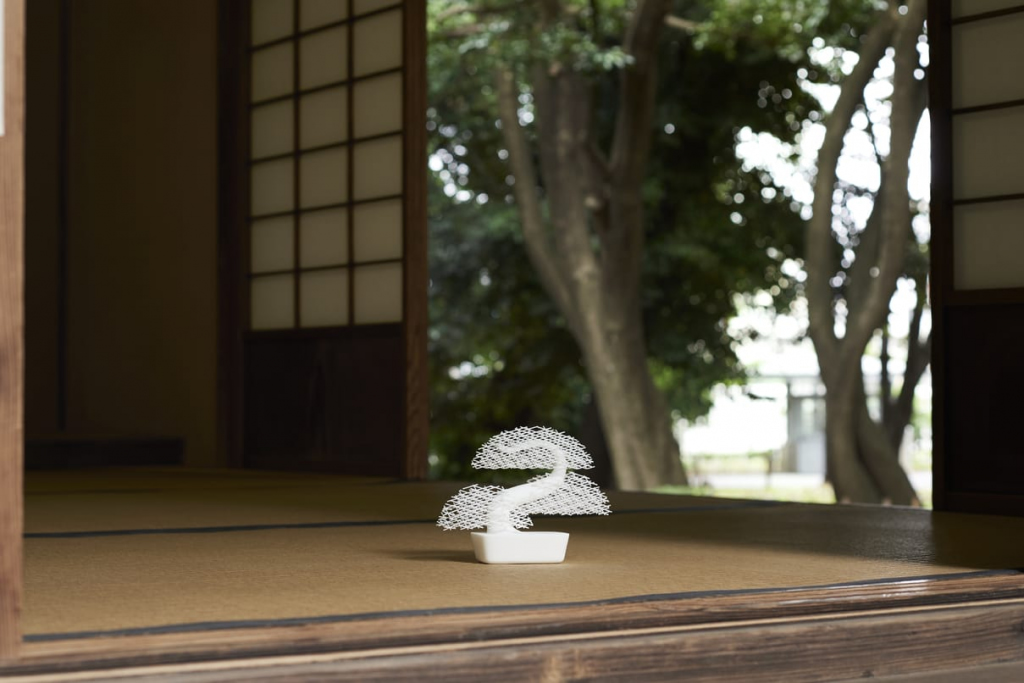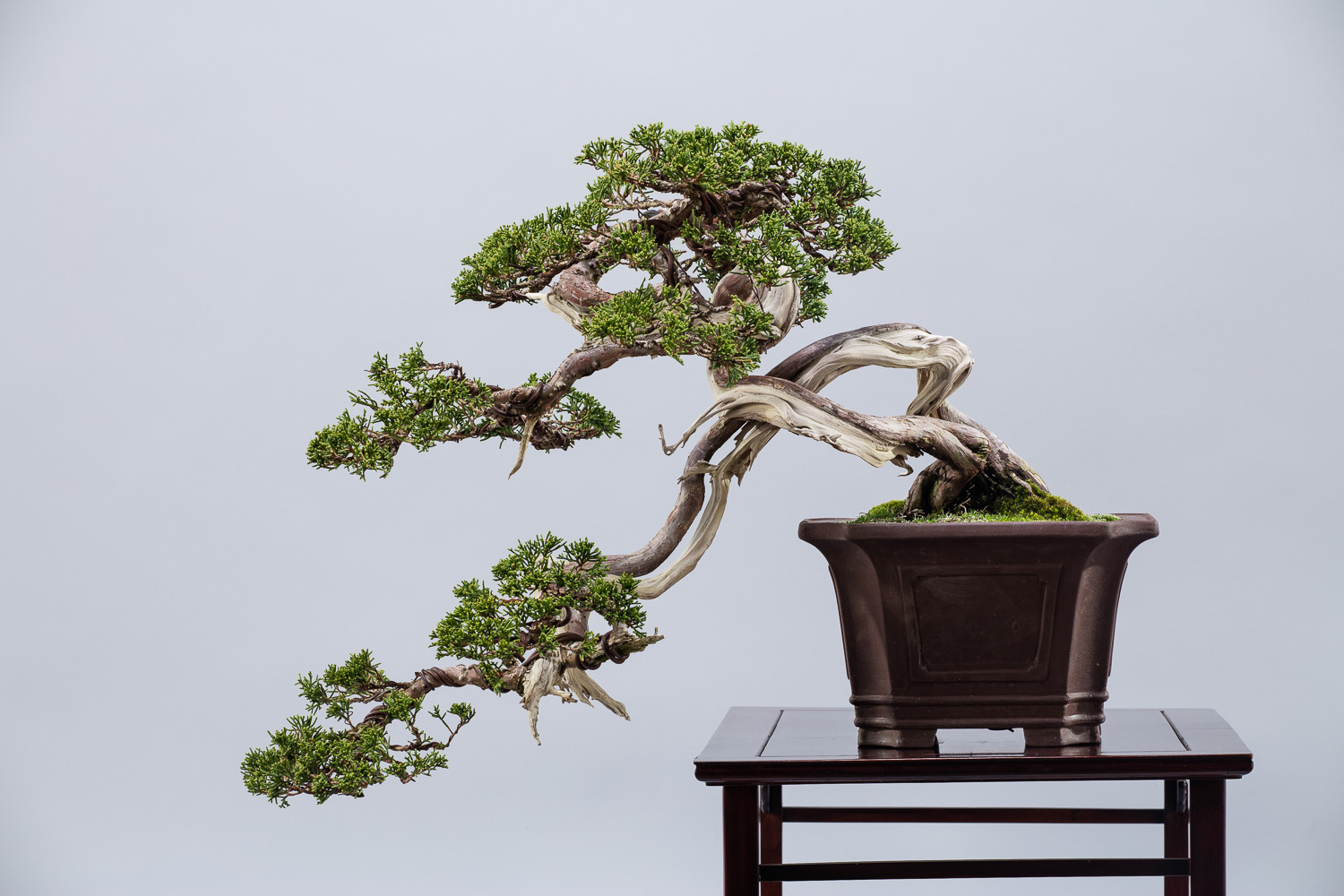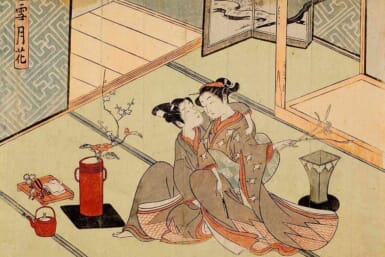Bonsai artisan and horticulturist Yoshinobu Tabata says that his work has no end. In writing, it may sound like a complaint, but to hear Tabata say it you’ll hear the joy behind it. Rather than finally attaining, it’s all about maintaining. Whether it’s bonsai or a whole Japanese garden, the product is an ever-changing living entity. Taking care of it is both work and a passion.
The Art and Artistry of Bonsai and Japanese Gardens
Hailing from China, the art of bonsai in Japan dates back to the 14th century. As cultural exchange often goes, bonsai grew into something a bit different in Japan over the centuries. The bonsai we know was popularized around the 18th century. Today, to put it simply, we know bonsai as miniature manicured trees displayed in pots.
The Japanese garden, in terms of landscape design, is often defined as minimalist, containing a pond and a bridge. Of course, that’s just a simple definition of a complex aesthetic that’s further divided into different styles.
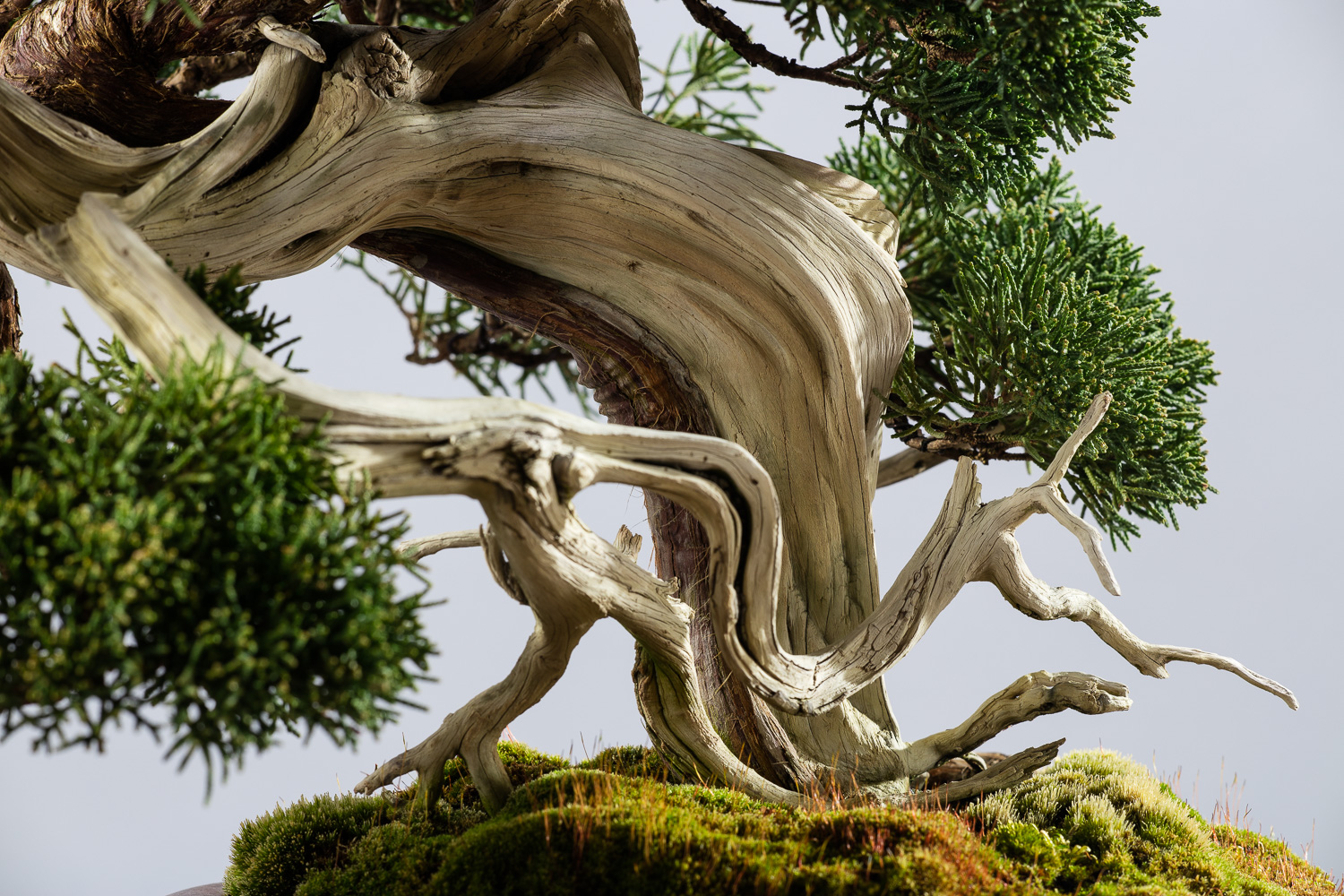
Both bonsai and garden design are a balance of art and artistry, or as Tabata says in Japanese “bijutsu and gijutsu.” Professionally trained at the prestigious Omiya Bonsai Village in Saitama Prefecture, Tabata is considered top of his field. He maintains, however, that the ultimate force is nature, even when tweaked and controlled. “You can experiment with the design, but you need to respect the plant,” he says. “If you’re too vain about your art and you exploit nature, it will die sooner.” Forcing bonsai in unnatural shapes is literally called “exhausting the tree” and bonsai artisans know if they do it the tree will wither instead of living for centuries.
Where Tame Things Grow
Tabata has extensive experience abroad, usually found organizing bonsai exhibitions and workshops. This also taught him that the Japanese garden cannot be forced in all climates and ecosystems. Even if a genuinely authentic Japanese garden cannot be grown everywhere, he believes, however, in carefully adapting it under the guidance of professional landscape artists.
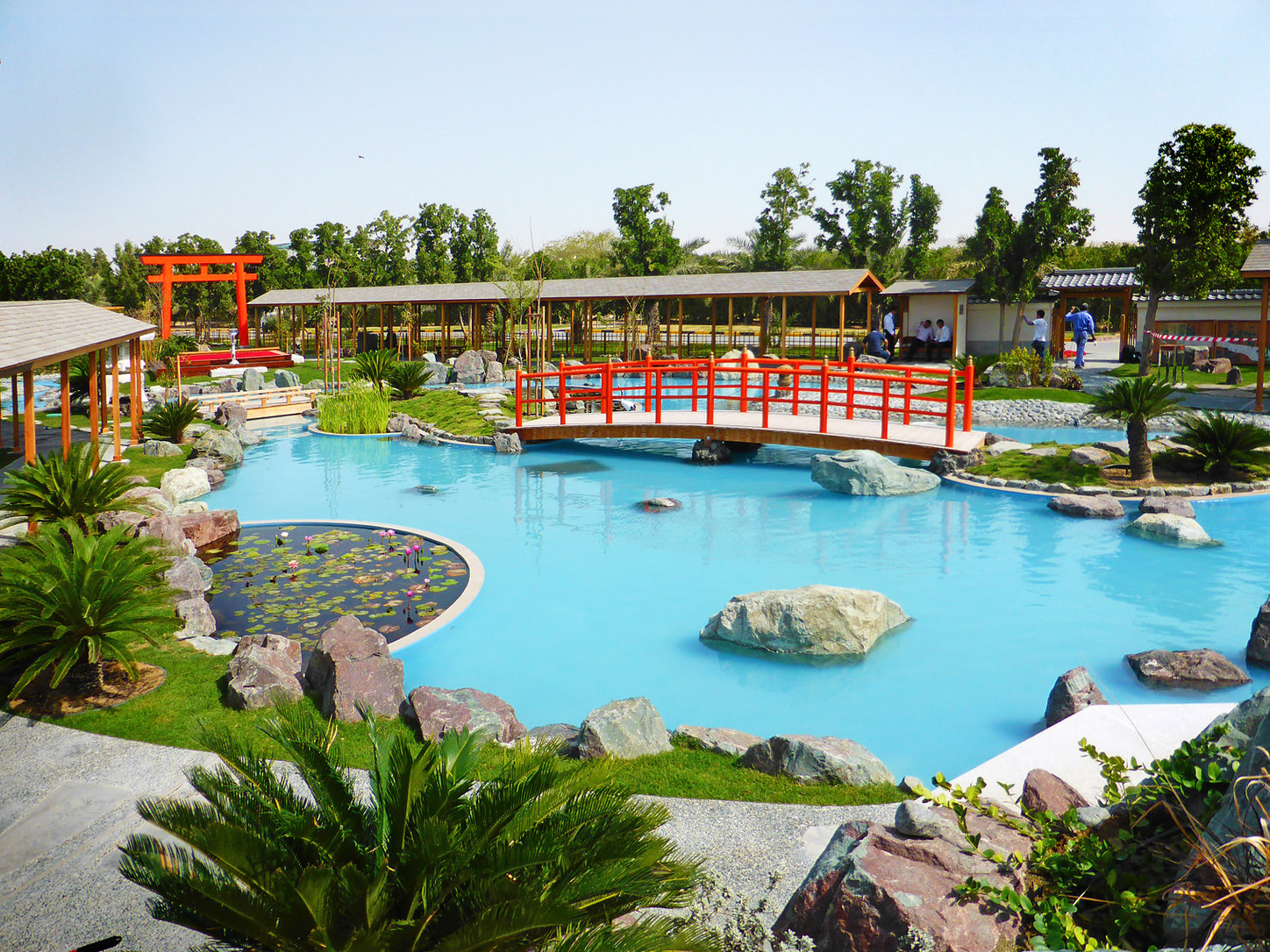
The Bahrain Japan Friendship Garden created by Kosugi Zohen Co.Ltd. from Tokyo
A great example of this is the Japanese garden in Bahrain by Kosugi Zohen, a company Tabata often collaborates with. The country’s arid climate called for adjustments to the traditional Japanese garden, and their culture also influenced the design. “There’s a wading pool instead of a koi (carp) pond, because people there like to play with water,” Tabata explains. He also points to the Torii gate, purely there as a symbol of Japan. In Japan, it’s considered a sacred component of Shinto shrines, never found in Japanese gardens. However, the goal of the Japan Bahrain Friendship Garden is international cultural collaboration, which was achieved.
The bonsai is also open to experimentation. There are bonsai orchids and cactuses, and bonsai techniques can be adapted to anything. Just like trees, styles and aesthetics grow and morph over time, and Tabata is excited to work on more international projects and advance bonsai culture further.
Bonsai is for Everyone, Everywhere
Gatekeeping is sadly common in the bonsai circles, as is the case with many traditions. Tabata is working to change that. Both the average bonsai artisan and bonsai enthusiast in Japan have long been male geriatrics. But young people, both men and women, have been getting into bonsai in the last decade. Tabata is excited by all the new energy they have brought, resulting in new products like kokedama (moss ball) bonsai. He notes that bonsai has become more widespread in Japan, being previously confined mostly to gardens and temples.
His travels, exhibitions and workshops have made him realize that foreigners love bonsai without the baggage that is traditionally associated with it in Japan. People of all ages and genders come to his workshops, making the point that bonsai is truly for everyone. In fact, Tabata notes that foreign bonsai artisans have improved so much in the last 30 years that they now rival their Japanese counterparts.
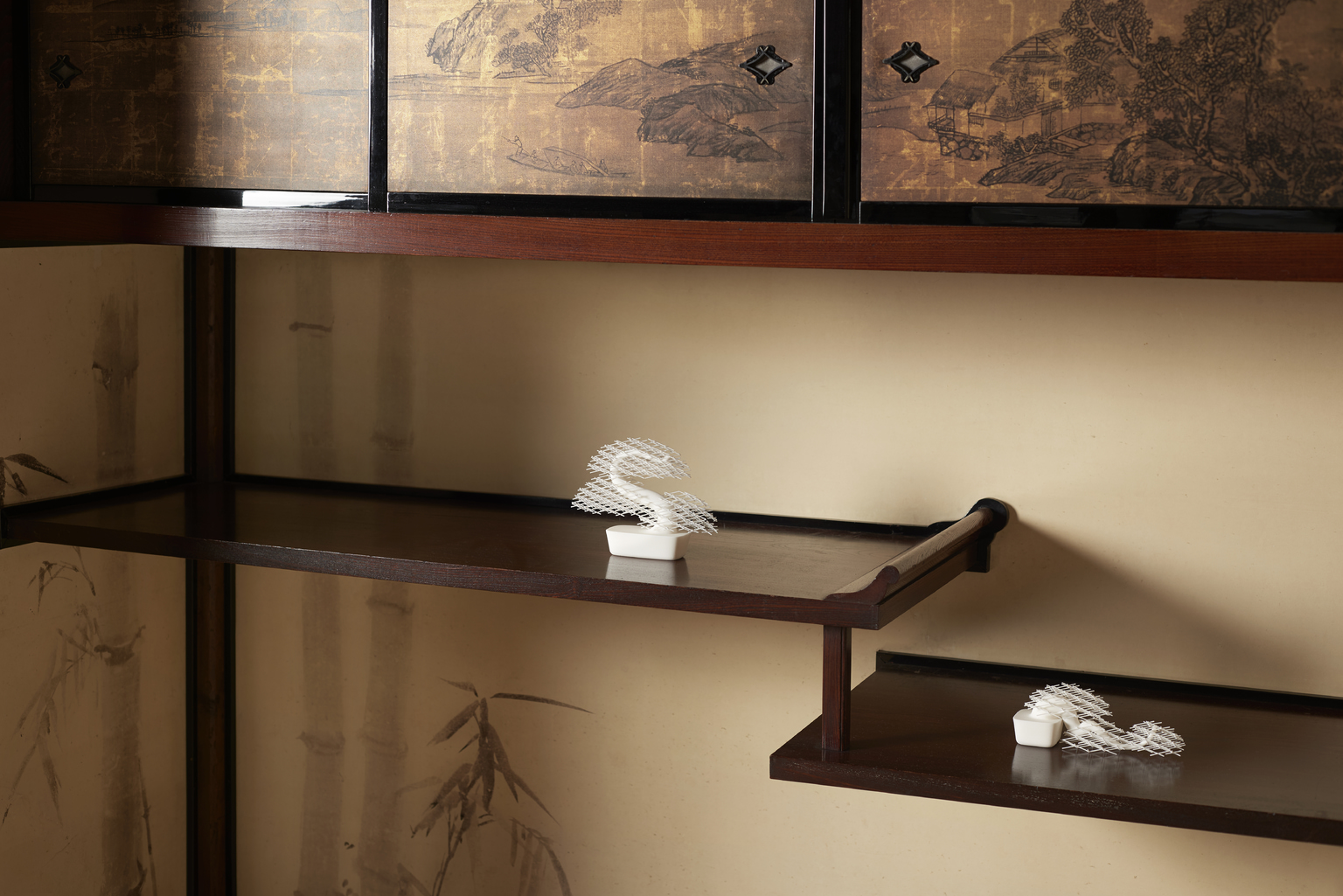
The Grid Bonsai
Trying to surmount the hurdles involved in the international export of living plants, Tabata found himself brainstorming for a bonsai that goes beyond nature. He established his company Japan Botanical Culture and found the perfect collaborators in the design company Nendo. That’s how the Grid Bonsai was born.
The Grid Bonsai is truly for everyone. It is 3D printed and requires no soil, no sun, no technique. However, it keeps some of the joy of gardening. You can prune it much like a bonsai, and even change its shape. It comes in seven different designs, which can then be trimmed to your liking. Its minimalist design and distinctive Japanese aesthetic are undeniably beautiful.
Tabata hopes that Grid Bonsai will open the doors to an ever more diverse range of bonsai lovers. And then, he hopes many will gain the confidence to care for a living bonsai too.
This article was published in Tokyo Weekender’s special issue, Made in Japan. Flip through the issue by clicking on the image below.
Sponsored Post

